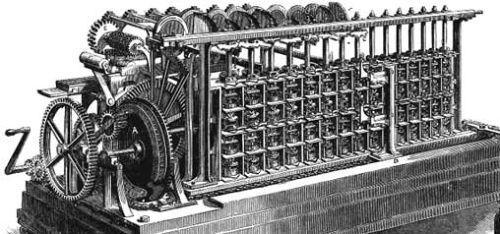Georg Scheutz (1785~1873)
Two Swedes, Georg Scheutz and his son, Edvard, built the Smithsonian’s machine, also dubbed as “The First Printing Calculator”, in 1853. Each of its long shafts holds disks, and each disk has wheels with ten teeth that correspond to marks in the disks. A scientist could set the disks with known figures, odd or even, turn a crank, and by reading down on each shaft, find the result of a calculation. This particular “engine” could also print out its answers. Sold to an observatory in Albany, New York, it was given to the Smithsonian in 1963.

The Scheutzes had no interest in pleasing design. Their device worked well, though, for they had followed to practical completion the concepts of one of the 19th century’s most brilliant minds.